Half/Full Draw at 15 feet issue/suggestions.
Moderators: Brutus, Belegarth: Forum Moderators
15 posts
• Page 1 of 1
Half/Full Draw at 15 feet issue/suggestions.
After looking around, I really don't mean to beat a dead horse here as this looks like this will forever be a problem.
I've been learning to herald more since the start of the season and with being at events thus far, I've been noticing that there are alot of archers that are full-drawing at or under 15 feet.
As of right now, with talking to a few others about this and getting some kind of idea of where people stand, there are few things I Want to mention or suggest.
More Aggressive heralding.
or
Possibly increasing the full-draw range to 20 feet.
I like the idea of more aggressive heralding at this point as its something that we can do right now to help address the situation than having a rule change for the BoW. There have been suggestions given as well for warnings for archers that ignore this (first time under, warning.. second time the bow is impounded for the day... etc.. etc.) and while we haven't got that far, I think that would be a good deterrent at this point for archers.
I guess what i'm asking is the general feel that others that are more experienced than I am have to say about this. Would you like to see a rule change to 20 feet or do you think the 15 feet is fine as long as we really make sure that archers are following it.
Another thing mentioned to me was getting one of those line markers that football uses but have it measure 15 feet the moment it actually comes into question and go from there... but I think that's abit excessive at this point.
Thoughts? Questions?
I've been learning to herald more since the start of the season and with being at events thus far, I've been noticing that there are alot of archers that are full-drawing at or under 15 feet.
As of right now, with talking to a few others about this and getting some kind of idea of where people stand, there are few things I Want to mention or suggest.
More Aggressive heralding.
or
Possibly increasing the full-draw range to 20 feet.
I like the idea of more aggressive heralding at this point as its something that we can do right now to help address the situation than having a rule change for the BoW. There have been suggestions given as well for warnings for archers that ignore this (first time under, warning.. second time the bow is impounded for the day... etc.. etc.) and while we haven't got that far, I think that would be a good deterrent at this point for archers.
I guess what i'm asking is the general feel that others that are more experienced than I am have to say about this. Would you like to see a rule change to 20 feet or do you think the 15 feet is fine as long as we really make sure that archers are following it.
Another thing mentioned to me was getting one of those line markers that football uses but have it measure 15 feet the moment it actually comes into question and go from there... but I think that's abit excessive at this point.
Thoughts? Questions?
-
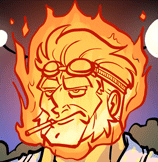
Bluff - Underling

- Posts: 57
- Joined: Thu Jun 10, 2010 10:23 pm
- Location: Bloomington, IL
- Started Fighting: 0- 8-2009
- Realm: Wolfpack
- Unit: Sons of Sylas
Re: Half/Full Draw at 15 feet issue/suggestions.
I have been thinking about this a lot too, and I was wondering if yellow tape (1 loop) half-way down the arrow would make archers remember to pull back under 15 feet. Would something like a mark at 14" work physically? I think it would serve as a good reminder.
Cofounder and Marshal of Andúril
Cofounder Battle for the Ring
Order of the Shining Tower
Order of the Western Flame
See you at Battle for the Ring in January www.battleforthering.com
Cofounder Battle for the Ring
Order of the Shining Tower
Order of the Western Flame
See you at Battle for the Ring in January www.battleforthering.com
-
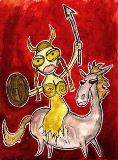
Sir Anastasia - Grizzled Veteran

- Posts: 2230
- Joined: Sun Sep 25, 2005 3:27 pm
- Location: Irvine, CA
- Started Fighting: 31 Aug 2001
- Realm: Marshal of Anduril
- Unit: Wardens
- Favorite Fighting Styles: Sword & Board, Extreme Taunting
Re: Half/Full Draw at 15 feet issue/suggestions.
All my arrows have a single line of about 1-2 inch duct tape measured to be between 13-15 inches from the draw stop to the notch. It helped significantly because all I had to do is when I felt like I was too close, quick glance down and I Was at half draw.
(here's how I did my arrow.. warning.. huge * picture... didn't know my camera could do that D:)
http://i.imgur.com/Iqhxby3.jpg
Looking how how I did my arrow, I could have pulled it back even further to really mark the half draw... when I put it on over a year ago (I don't use these arrows anymore... if I started up again, i'd make a new set) we just kinda eyeballed it.. close.. but no cigar?
I think if I used a brighter color than grey, it would be much, MUCH more effective and one piece of tape flush against the shaft doesn't * with the arrow at all.
It's a great visual cue in my opinion... I'd like to see more archers actually do this.
(here's how I did my arrow.. warning.. huge * picture... didn't know my camera could do that D:)
http://i.imgur.com/Iqhxby3.jpg
Looking how how I did my arrow, I could have pulled it back even further to really mark the half draw... when I put it on over a year ago (I don't use these arrows anymore... if I started up again, i'd make a new set) we just kinda eyeballed it.. close.. but no cigar?
I think if I used a brighter color than grey, it would be much, MUCH more effective and one piece of tape flush against the shaft doesn't * with the arrow at all.
It's a great visual cue in my opinion... I'd like to see more archers actually do this.
-

Bluff - Underling

- Posts: 57
- Joined: Thu Jun 10, 2010 10:23 pm
- Location: Bloomington, IL
- Started Fighting: 0- 8-2009
- Realm: Wolfpack
- Unit: Sons of Sylas
Re: Half/Full Draw at 15 feet issue/suggestions.
Sweet. I think I'll join you. Everything still fly well after that?
Cofounder and Marshal of Andúril
Cofounder Battle for the Ring
Order of the Shining Tower
Order of the Western Flame
See you at Battle for the Ring in January www.battleforthering.com
Cofounder Battle for the Ring
Order of the Shining Tower
Order of the Western Flame
See you at Battle for the Ring in January www.battleforthering.com
-

Sir Anastasia - Grizzled Veteran

- Posts: 2230
- Joined: Sun Sep 25, 2005 3:27 pm
- Location: Irvine, CA
- Started Fighting: 31 Aug 2001
- Realm: Marshal of Anduril
- Unit: Wardens
- Favorite Fighting Styles: Sword & Board, Extreme Taunting
Re: Half/Full Draw at 15 feet issue/suggestions.
"Half draw" varies from bow to bow, sometimes greatly depending on construction and design. I would say the answer is increased training and awareness at events and local practices is what's needed, not an arbitrary tape mark. Required safety classes, recurrent qualification will go much further at keeping all of us safe.
Sir Oroku Norinaga, KBMC, OGO
Tertiary Knight of the High Code
"You do not have to be a squire to start learning to be a knight. Take your time and make good decisions."-Uric
Tertiary Knight of the High Code
"You do not have to be a squire to start learning to be a knight. Take your time and make good decisions."-Uric
-

Orokusan - Grunt

- Posts: 243
- Joined: Sat Jun 04, 2005 12:23 am
- Location: Stygia
- Started Fighting: 18 May 2005
- Realm: Sygia
- Favorite Fighting Styles: Archery, Florentine, Spear
Re: Half/Full Draw at 15 feet issue/suggestions.
Anastasia of Chamonix wrote:Sweet. I think I'll join you. Everything still fly well after that?
For me, arrows/bow didn't even notice the tape there. Just make sure it's a single piece of tape around the shaft once with little/no overlap (or if there's some over lap, make sure it's on upper side of the arrow so it won't rub against the bow)

Orokusan wrote:"Half draw" varies from bow to bow, sometimes greatly depending on construction and design. I would say the answer is increased training and awareness at events and local practices is what's needed, not an arbitrary tape mark. Required safety classes, recurrent qualification will go much further at keeping all of us safe.
That's another thing that was brought to my attention as well, so even if everyone taped the half-draw of their arrows to accommodate their bow.. it may not be the same on other peoples bows. I do agree that we should train our archers more in this regard, but much of our culture hangs on the 'pick up what you want and go fight'.. I would love to get mandatory training on our archers much like the SCA does, but that would alienate the people so hard when all we need to do is get them to become more aware that it IS an issue and much like all the other weapons, they need training in restraint at closer quarters.
-

Bluff - Underling

- Posts: 57
- Joined: Thu Jun 10, 2010 10:23 pm
- Location: Bloomington, IL
- Started Fighting: 0- 8-2009
- Realm: Wolfpack
- Unit: Sons of Sylas
Re: Half/Full Draw at 15 feet issue/suggestions.
Have archers fight in a 15' x 15' x 15' cube, always half draw. Problem fixed.
"Favorite Fighting Styles: adsfdsfsdssdsdsd"
-Seanyviala-
-Seanyviala-
-
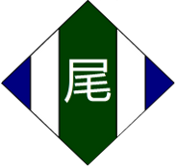
Tails - Veteran

- Posts: 1817
- Joined: Tue Oct 11, 2005 1:31 pm
- Location: Chicago
- Started Fighting: 22 Aug 2007
- Realm: Morva
- Unit: Clan of the Hydra
- Favorite Fighting Styles: Working the Pole
- Pronouns: Drip / Drop
Re: Half/Full Draw at 15 feet issue/suggestions.
Personally id love to see a archery profiecency test that you have to re-up on ever 2 years to prove you are safe on a national level. That might be a bit hard to start but its a dream. With points being awarded when you **** up so many points and your bow is pulled for X number of events. Bow pulled 3 times and you don't get to arch ever again.
The other thing is, take peoples bows away. Make a general announcement, if you see an issue, sit them for 5 minutes. if they continue to break the rules there is no reason to not tell them to put the bow down for the rest of the day. Aggressive heralding is ALWAYS the answer.
Ive watched a lot of "Great" archers in the past year full draw at about 10 feet. And it bothers me, until people step up and make an example out of someone this **** will continue to happen.
The other thing is, take peoples bows away. Make a general announcement, if you see an issue, sit them for 5 minutes. if they continue to break the rules there is no reason to not tell them to put the bow down for the rest of the day. Aggressive heralding is ALWAYS the answer.
Ive watched a lot of "Great" archers in the past year full draw at about 10 feet. And it bothers me, until people step up and make an example out of someone this **** will continue to happen.
-

varadin - Veteran

- Posts: 1932
- Joined: Sun May 04, 2003 3:26 pm
- Location: Pentwyvern
- Started Fighting: 20 Apr 2001
- Realm: Pentwyvern
- Unit: EBF
Re: Half/Full Draw at 15 feet issue/suggestions.
Our realm does require archery training. We are also in the process of declaring archers who complete a very extensive training program "proficient." It's my hope that we can get people to start doing more things like this so we can improve safety.
Cofounder and Marshal of Andúril
Cofounder Battle for the Ring
Order of the Shining Tower
Order of the Western Flame
See you at Battle for the Ring in January www.battleforthering.com
Cofounder Battle for the Ring
Order of the Shining Tower
Order of the Western Flame
See you at Battle for the Ring in January www.battleforthering.com
-

Sir Anastasia - Grizzled Veteran

- Posts: 2230
- Joined: Sun Sep 25, 2005 3:27 pm
- Location: Irvine, CA
- Started Fighting: 31 Aug 2001
- Realm: Marshal of Anduril
- Unit: Wardens
- Favorite Fighting Styles: Sword & Board, Extreme Taunting
Re: Half/Full Draw at 15 feet issue/suggestions.
I know there's a few people who I've talked to who also would love to get some kind of proficiency test for archers but we'd need to have some kind of standard and people that are able to test across the realms.
I hate to be that guy and tell people they can't use weapons that they bought and use for Bel... but at the same time that sentiment is slowly going away as I get more confident in heralding and the people i'm watching fight are as safe as they can be.
As far as making announcements/final warnings.. I've noticed a trend towards this, which is a good thing. I'm tired of seeing people walk off the field * off and holding their eyes because of arrows to the head.
I hate to be that guy and tell people they can't use weapons that they bought and use for Bel... but at the same time that sentiment is slowly going away as I get more confident in heralding and the people i'm watching fight are as safe as they can be.
As far as making announcements/final warnings.. I've noticed a trend towards this, which is a good thing. I'm tired of seeing people walk off the field * off and holding their eyes because of arrows to the head.
-

Bluff - Underling

- Posts: 57
- Joined: Thu Jun 10, 2010 10:23 pm
- Location: Bloomington, IL
- Started Fighting: 0- 8-2009
- Realm: Wolfpack
- Unit: Sons of Sylas
Re: Half/Full Draw at 15 feet issue/suggestions.
We ban red weapons from people when they demonstrate unsafe behavior. This is the same situation. If the person is being unsafe with the bow, they shouldn't use it until they've demonstrated proficiency and safe use.
As I see it, wWe have three categories of archers (or perhaps people using a bow) that are a concern:
1) Don't control fight or flight: Archers who panic draw at under 15 ft.
2) Don't know: Archers that don't really know close 15 ft. is or that it is a rule.
3) Don't care: Some archers don't really care at what distance they shoot full draw.
I think the first two issues can be mitigated with training, especially on range estimation and on not panic drawing. For the third, a couple of solutions I see are marshals and other archers policing their own. If you're an archer and you see one of your fellow archers full drawing when not necessary, you need to call them on it. If they get uppity, remind them that it is a rule and it can create an unsafe situation. If they continue to be flippant about it, report it to the marshal, their unit leader, or realm leader. That is, until we start putting helmet cams on all the archers (hmmm...)
Here are some points we discussed in developing the archery proficiency requirements Ana had mentioned:
1) Know all of the relevant Book of War rules by heart. However that is evaluated, i.e., written test, verbal test, etc.
2) Demonstrate how to properly weapon check a bow.
3) Demonstrate how to properly weapon check an arrow.
4) Demonstrate the ability to differentiate between a good and failing arrow during hit test.
5) Rev's essay questions that he mentioned:
a) There is a large melee going on in front of you. Two fighters from the blue team against four fighters on your team. You loose an arrow at a fighter from the blue team. Just before the arrow would impact, your view is obscured by your teammate. The blue team fighter continues fighting without indicating any damage taken. What do you call?
b) Four fighters from red team and four fighters from blue team are engaged in close-quarters melee combat (within 4 feet of each other). A fighter is in the center of the blue line, wielding a glaive. This is obviously an easy shot. Do you take the shot? Why or why not?
c) Near the end of the battle, there is only one person left on the opposing team. You and five of your team are still alive. Do you kill the one remaining fighter? Why or why not?
d) Conversely, you are the last person standing on your team, with three or more fighters opposing you. You have a quiver full of arrows. Do you ditch the bow and arrows and engage in melee combat or continue to try and arch? Why or why not?
e) On the field, when might it be inappropriate to shoot someone in the head? Why?
f) A fighter is charging you. You get off a shot, but he blocks it with his shield. He swings at you and hits your bow. What do you do?
6) Demonstrate safely stringing a bow.
7) Demonstrate firing several shots while being observed for safety.
8 ) Demonstrate the ability to follow shots and accurately call where the arrow hit.
9) Demonstrate a safe response to a charging fighter, i.e., NOT to panic full draw, especially under 15'.
As I see it, wWe have three categories of archers (or perhaps people using a bow) that are a concern:
1) Don't control fight or flight: Archers who panic draw at under 15 ft.
2) Don't know: Archers that don't really know close 15 ft. is or that it is a rule.
3) Don't care: Some archers don't really care at what distance they shoot full draw.
I think the first two issues can be mitigated with training, especially on range estimation and on not panic drawing. For the third, a couple of solutions I see are marshals and other archers policing their own. If you're an archer and you see one of your fellow archers full drawing when not necessary, you need to call them on it. If they get uppity, remind them that it is a rule and it can create an unsafe situation. If they continue to be flippant about it, report it to the marshal, their unit leader, or realm leader. That is, until we start putting helmet cams on all the archers (hmmm...)
Here are some points we discussed in developing the archery proficiency requirements Ana had mentioned:
1) Know all of the relevant Book of War rules by heart. However that is evaluated, i.e., written test, verbal test, etc.
2) Demonstrate how to properly weapon check a bow.
3) Demonstrate how to properly weapon check an arrow.
4) Demonstrate the ability to differentiate between a good and failing arrow during hit test.
5) Rev's essay questions that he mentioned:
a) There is a large melee going on in front of you. Two fighters from the blue team against four fighters on your team. You loose an arrow at a fighter from the blue team. Just before the arrow would impact, your view is obscured by your teammate. The blue team fighter continues fighting without indicating any damage taken. What do you call?
b) Four fighters from red team and four fighters from blue team are engaged in close-quarters melee combat (within 4 feet of each other). A fighter is in the center of the blue line, wielding a glaive. This is obviously an easy shot. Do you take the shot? Why or why not?
c) Near the end of the battle, there is only one person left on the opposing team. You and five of your team are still alive. Do you kill the one remaining fighter? Why or why not?
d) Conversely, you are the last person standing on your team, with three or more fighters opposing you. You have a quiver full of arrows. Do you ditch the bow and arrows and engage in melee combat or continue to try and arch? Why or why not?
e) On the field, when might it be inappropriate to shoot someone in the head? Why?
f) A fighter is charging you. You get off a shot, but he blocks it with his shield. He swings at you and hits your bow. What do you do?
6) Demonstrate safely stringing a bow.
7) Demonstrate firing several shots while being observed for safety.
8 ) Demonstrate the ability to follow shots and accurately call where the arrow hit.
9) Demonstrate a safe response to a charging fighter, i.e., NOT to panic full draw, especially under 15'.
"...change requires action, it doesn't just happen. Define your actions by how you think the game should be, not how the game is. The game will follow."--Big Jimmy
-

Kyrian - Hero

- Posts: 1528
- Joined: Sat Apr 19, 2003 10:52 pm
- Location: Chino Hills, CA
- Started Fighting: 0- 8-1991
- Realm: Andor
- Unit: Clan of the Hydra
- Favorite Fighting Styles: sword and board
florentine
archery - Pronouns: he/him
Re: Half/Full Draw at 15 feet issue/suggestions.
I really like those essay questions. I'll probably see about adding them to our written archery test if we don't already have something like that (it's been a really long time since I looked at it, plus I neither have nor use a bow).
Not that it really needs to be reiterated, but I'm also a proponent of testing to help ensure better archery. Like I already mentioned, we have a written test that one must pass, in addition to our requirement of having a passing bow and a minimum of three passing arrows. We should probably require re-testing every so often too, so that's another suggestion I'd like to try to implement, at the very least for us locally.
Not that it really needs to be reiterated, but I'm also a proponent of testing to help ensure better archery. Like I already mentioned, we have a written test that one must pass, in addition to our requirement of having a passing bow and a minimum of three passing arrows. We should probably require re-testing every so often too, so that's another suggestion I'd like to try to implement, at the very least for us locally.
- Matthias - Dun Abhon
- Toadie

- Posts: 144
- Joined: Wed Dec 19, 2007 11:47 am
- Location: Louisville, KY
- Started Fighting: 21 May 2006
- Realm: Dun Abhon
- Favorite Fighting Styles: Sword and medium round punch shield
Re: Half/Full Draw at 15 feet issue/suggestions.
Tough questions, good stuff. Grassroots and playtest up to a national standard.
Back to the half draw mark idea, I think it could work. Even while the lengths would vary slightly, a few inches wouldn't break the bank.
The whole point of a half draw would be to get a partial draw, reducing the poundage released. A mark on the arrow could regularly reinforce that in archer's minds, and we already have precedent: one sided blues, people still "flat" sometimes, but it serves as an identifiable mark for everyone, combatants and heralds.
Just something simple like a strip of yellow electrical tape at the original bow's half-draw might be enough to remind most archers to halfdraw, and be flashy enough to aid the heralds. Easy enough to add/augment it at an event.
Back to the half draw mark idea, I think it could work. Even while the lengths would vary slightly, a few inches wouldn't break the bank.
The whole point of a half draw would be to get a partial draw, reducing the poundage released. A mark on the arrow could regularly reinforce that in archer's minds, and we already have precedent: one sided blues, people still "flat" sometimes, but it serves as an identifiable mark for everyone, combatants and heralds.
Just something simple like a strip of yellow electrical tape at the original bow's half-draw might be enough to remind most archers to halfdraw, and be flashy enough to aid the heralds. Easy enough to add/augment it at an event.
beach bum ninja
Knighted by Ser Necronos
Alom the Stalwart
The Bull Moose Knight
Knighted by Ser Necronos
Alom the Stalwart
The Bull Moose Knight
-
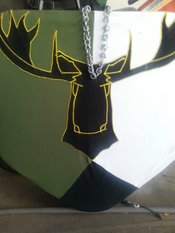
Alom - Brute

- Posts: 552
- Joined: Tue Jul 01, 2003 11:53 am
- Location: UT>MS<AK
- Started Fighting: 01 Jan 2003
- Realm: Beyond the Wall
Re: Half/Full Draw at 15 feet issue/suggestions.
I like everything you posted there, Kyrian. All real solid questions and a firm knowledge of what archers are doing are presented in the answers for these questions with some theoreticals.
I think if every archer had to answer/do something like this, everyone would play alot safer and everyone would have more fun.
At this point, we can't really enforce these unless its on a realm by realm basis... but if enough realms started to do this for their archers, I don't see why sometime down the road (we're talking WAAAY down the road) we could make this mandatory.
If I see new archers, I will definitely have to use these questions for them. I do know that I couldn't personally answer a few of them ( mostly the checking arrows part.. not enough experience) but it should be something all archers should know.
I think if every archer had to answer/do something like this, everyone would play alot safer and everyone would have more fun.
At this point, we can't really enforce these unless its on a realm by realm basis... but if enough realms started to do this for their archers, I don't see why sometime down the road (we're talking WAAAY down the road) we could make this mandatory.
If I see new archers, I will definitely have to use these questions for them. I do know that I couldn't personally answer a few of them ( mostly the checking arrows part.. not enough experience) but it should be something all archers should know.
-

Bluff - Underling

- Posts: 57
- Joined: Thu Jun 10, 2010 10:23 pm
- Location: Bloomington, IL
- Started Fighting: 0- 8-2009
- Realm: Wolfpack
- Unit: Sons of Sylas
Re: Half/Full Draw at 15 feet issue/suggestions.
There are bows out there that shoot the same at half draw as full draw. What do you do about them?
All this talk of arbitrary tape lines on arrows and tests isn't going to do much. I do agree testing before getting into archery is good, but what about picking up a bow from a dead person during a fight and using it? Also, a lot of people, including marshalls, can't eyeball 15' reliably and consistently. It all comes down to "that looks too close"
It all comes down to Marshalling. If someone is shooting full draw under 15', then warn them. Keep a Marshall near them, and if they do it again, sit them for X amount of time or remove their bow.
All this talk of arbitrary tape lines on arrows and tests isn't going to do much. I do agree testing before getting into archery is good, but what about picking up a bow from a dead person during a fight and using it? Also, a lot of people, including marshalls, can't eyeball 15' reliably and consistently. It all comes down to "that looks too close"
It all comes down to Marshalling. If someone is shooting full draw under 15', then warn them. Keep a Marshall near them, and if they do it again, sit them for X amount of time or remove their bow.
Knight of Numenor
-
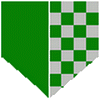
Cyric - Veteran

- Posts: 1957
- Joined: Sat Apr 05, 2003 10:57 am
- Started Fighting: 23 Aug 1999
- Realm: Numenor
- Unit: Knights of Numenor
15 posts
• Page 1 of 1
Return to Marshalling/Heralding
Who is online
Users browsing this forum: No registered users and 0 guests
